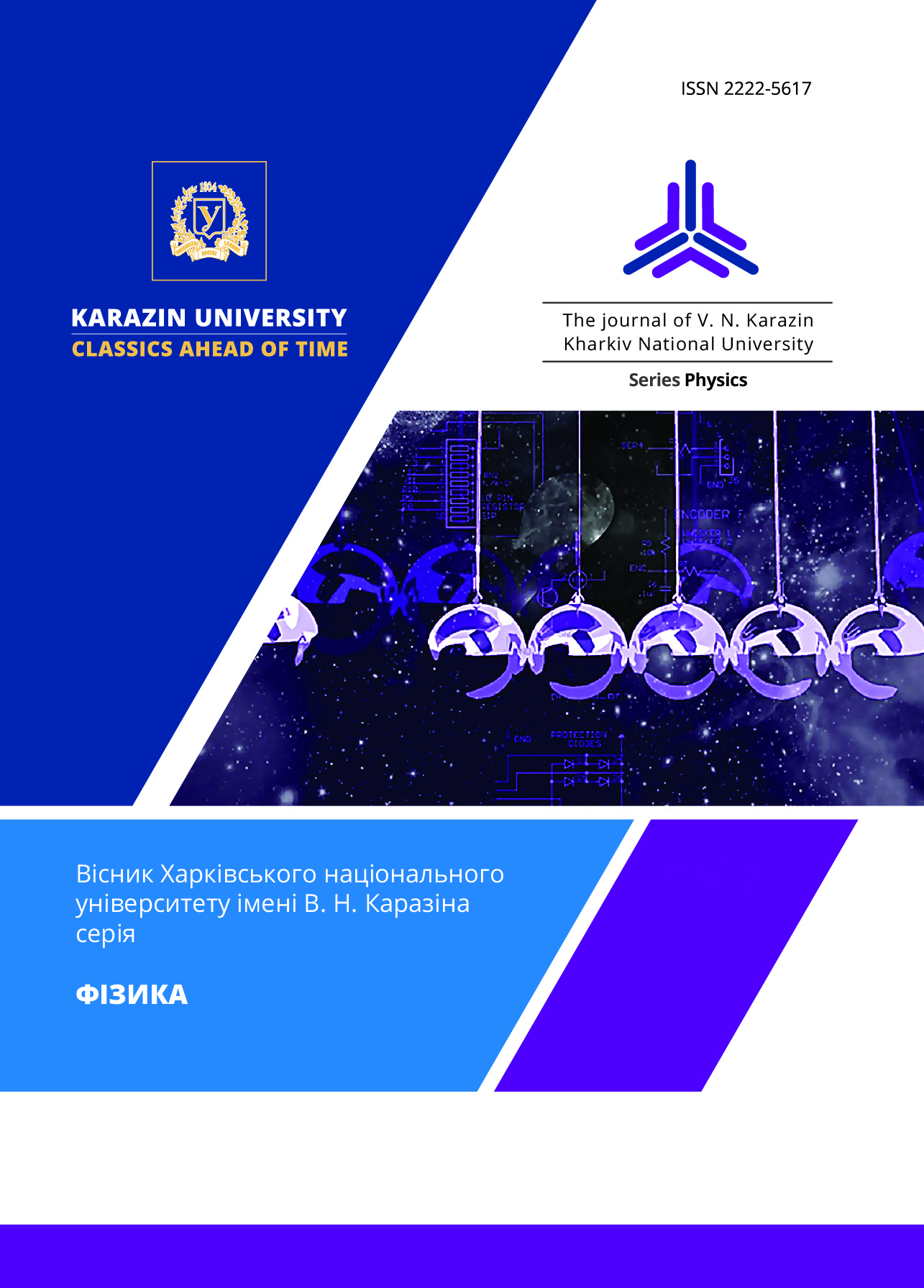Концентраційні аномалії гальваномагнітних властивостей твердих розчинів на основі Sb2Te3 в системі (Bi1-хSbх)2Te3
Анотація
На сьогодні тверді розчини на основі телуридів сурми та вісмуту є одними з найбільш широко вживаних матеріалів для р- гілок термоелектричних перетворювачів, які використовують при кімнатній температурі і нижче. В даній роботі представлені результати дослідження гальваномагнітних властивостей (електропровідності σ, коефіцієнта Холла RH, холлівської рухливості носіїв заряду μH) термоелектричних твердих розчинів (Bi1-хSbх)2Te3 в інтервалі складів поблизу чистого Sb2Te3 (х = 1 – 0.96) при температурах Т = 80 К та Т = 300 К.
Дослідження проведено на литих полікристалічних зразках, отриманих методом кристалізації з розплаву з подальшим довгостроковим відпалом у вакуумі при температурі Т = 650 К. Гальваномагнітні властивості вимірювали стандартним dc-методом. Експериментальна комірка охолоджувалась рідким азотом. Похибка при вимірюванні RH та s не перевищувала ± 5%.
Показано, що введення перших порцій Bi2Te3 призводить до різкого зниження σ, що пов’язується із високим ступенем розупорядкування кристалічної решітки. В інтервалі складів х = 0.99 – 0.9825 на концентраційних залежностях σ(х) і μH(х) виявлене аномальне зростання σ та μH. Наявність таких концентраційних аномалій пов'язується з переходом від розведених до концентрованих твердих розчинів. Висловлено припущення про перколяційну природу зазначеного фазового переходу. В рамках задачі сфер теорії перколяції надана оцінка радіуса деформаційної сфери R0 для атома домішки (Bi). Отримане значення R0 узгоджується із короткодіючим потенціалом домішки. Встановлено, що положення аномалій σ(х) і μH(х) не змінюється при зниженні температури від 300 К до 80 К.
Таким чином, спостереження концентраційних аномалій властивостей для твердого розчину (Bi1-xSbx)2Te3 в інтервалі складів поблизу чистого Sb2Te3 є ще одним підтвердженням гіпотези про універсальний характер поведінки твердих розчинів за малої концентрації домішки. Виявлені аномалії необхідно враховувати при розробці методів підвищення термоелектричної ефективності матеріалів шляхом створення твердих розчинів або додавання легуючих компонентів.
Завантаження
Посилання
2. C. Uher (ed.), Materials Aspect of Thermoelectricity, CRC Press, Boca Raton, 624 (2016) https://doi.org/10.1201/9781315197029
3. D.M. Rowe, CRC Handbook of Thermoelectrics: Macro to Nano. Boca Raton: CRC Taylor & Francis, (2006). https://doi.org/10.1201/9781420038903
4. J. Wei, L. Yang, Z. Ma, P. Song, M. Zhang, J. Ma [et. al.], J. Mater. Sci, vol. 5512642+ (2020). https://doi.org/10.1007/s10853-020-04949-0
5. M. Goltsman, V.A. Kudinov, and I.A. Smirnov, Semiconducting thermoelectric materials based on Bi2Te3. М.: Nauka (1972) (in Russian).
6. T. Cao, X.-L.Shi, M. Li, B. Hu, W. Chen, W.-D. Liu, et al. eScience, 3(3), 2667 (2023). https://doi.org/10.1016/j.esci.2023.100122
7. X.-L. Shi, J. Zou, and Z.-G. Chen, Chem. Rev., 120 (15), 7399, (2020). https://doi.org/10.1021/acs.chemrev.0c00026
8. Z. Soleimani, S. Zoras, B. Ceranic, S. Shahzad, Y. Cui Sustain., 37, 2213 (2020). https://doi.org/10.1016/j.seta.2019.100604
9. J. Zhang, C.-Z. Chang, Z. Zhang, J. Wen, X. Feng and K. Li, Nat. Commun., 2:574 (2011). https://doi.org/10.1038/ncomms1588
10. V.A. Kulbachinsky, H. Ozaki, Y. Miyahara and K. Funagai, JETP, 97(6), 1212 (2003). https://doi.org/10.1134/1.1641903
11. N.Kh. Abrikosov, L.V. Poretskaya, and I.E Ivanova,"The Antimony-Tellurium System" Russ. J. Inorganic Chem., vol. 4(11), 2525 (1959). (іn Russian)
12. B. Roy, B.R. Chakraborty, R. Bhattacharya, A.K. Dutta, Solid State Commun, 25, 617 (1978). https://doi.org/10.1016/0038-1098(78)91503-X
13. L.R. Testardi, J.N. Bierly and F.J. Donahoe, J Phys Chem Solids, 23, 1200 (1962). https://doi.org/10.1016/0022-3697(62)90168-3
14. H.-W. Jeon, H.-Ph. Ha, D.-B. Hyun and J.-D. Shim, J. Phys. Chem. Solids, 52(4), 579 (1991). https://doi.org/10.1016/0022-3697(91)90151-O
15. L.D. Ivanova, Yu.V. Granatkina, Inorg. Mater., 36, 672, (2000). https://doi.org/10.1007/BF02758419
16. K Martynova, E. Rogacheva, Funct Mater, 25(1), 54 (2018). DOI:10.15407/fm25.01.054
17. E.I.Rogacheva, K.V. Martynova and A.S. Bondarenko, J. Thermoelectr, 5, 47 (2016).
18. E.I. Rogacheva , J. Thermoelectr, 2, 61 (2007).
19. E.I. Rogacheva, O.N. Nashchekina, “Percolation Effects in Semiconductor IV-VI – based Solid Solutions and Thermoelectric Materials Science.” In: Advanced Thermoelectric Materials, Ed. Ch.R. Park, 2019, John Willey & Sons (2019) 383. DOI:10.1002/9781119407348.ch9
20. B.I. Shklovskii, A.L. Efros, Electronic Properties of Doped Semiconductors, Springer-Verlag, New York, (1984) 388 p. https://doi.org/10.1007/978-3-662-02403-4
21. D. Stauffer, A. Aharony, Introduction to Percolation Theory, Taylor & Francis, London/Washington DC (1992), 192 p. https://doi.org/10.1201/9781315274386








3.gif)
